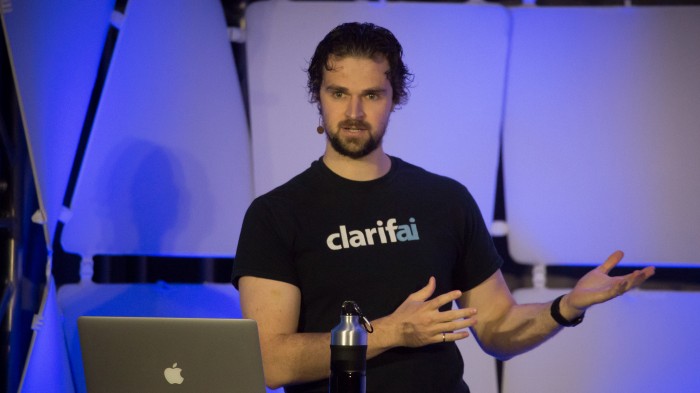AI That’s Into Celebrity Spotting

Computer-vision startup Clarifai, which builds AI that can recognize the content of photos and videos, is apparently also angling for a job as a member of the paparazzi.
Matthew Zeiler, Clarifai’s CEO and founder, said Tuesday at MIT Technology Review’s EmTech Digital conference in San Francisco that the company recently launched a demo showing its ability to recognize the faces in images and classify them as one of 10,000 different celebrities.
Recognizing faces is a common artificial-intelligence task, but recognizing who, specifically, is in an image can be much trickier, especially in different lighting conditions or when the subjects are not staring straight at a camera or are occluded by other people or objects.
Zeiler showed several examples of Clarifai's capabilities in photos with one or several celebrities, where the AI model reported its confidence that people like Angelina Jolie or Morgan Freeman were represented. Users can also ask Clarifai’s model to identify the celebrities in other photos online, Zeiler said.
The model is clearly a work in progress. In a photo of a press event for the film Hidden Figures, Clarifai correctly identified Janelle Monae, Octavia Spencer, Taraji P. Henson, and Pharrell Williams. But its status as an alpha-stage technology is evident in some of its guesses: it estimated (with a low degree of certainty, to be fair) that images of two women on a large poster in the background—Katherine Johnson and Mary Jackson, who are portrayed by Henson and Monae in the movie—were Whoopi Goldberg and Chevy Chase, respectively.
Keep Reading
Most Popular
Large language models can do jaw-dropping things. But nobody knows exactly why.
And that's a problem. Figuring it out is one of the biggest scientific puzzles of our time and a crucial step towards controlling more powerful future models.
How scientists traced a mysterious covid case back to six toilets
When wastewater surveillance turns into a hunt for a single infected individual, the ethics get tricky.
The problem with plug-in hybrids? Their drivers.
Plug-in hybrids are often sold as a transition to EVs, but new data from Europe shows we’re still underestimating the emissions they produce.
Stay connected
Get the latest updates from
MIT Technology Review
Discover special offers, top stories, upcoming events, and more.